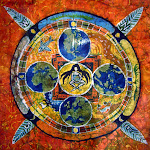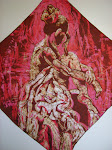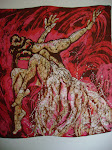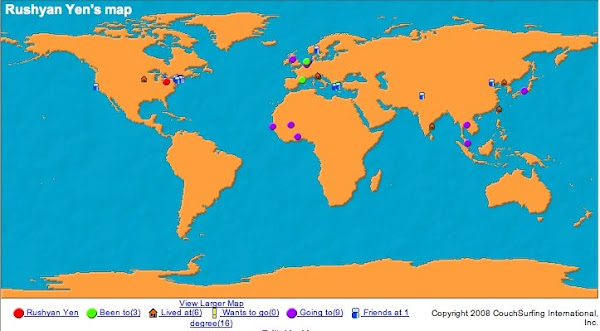Like rozome, katazome is a Japanese method of dyeing fabrics using a resist. Instead of wax however, rice flour paste is what repels the dye and creates the design.
Sketch a design on paper making sure all black areas connect

Trace onto stencil paper and cut out design with knife.
(The stencil is made of several sheets of mulberry paper laminated with rice paste and tanned with persimmon juice which is very acidic and makes the laminated paper strong and waterproof).
Prime a wood board with watered down rice paste.
This will act as the glue that holds the fabric in place.
Attach fabric onto board with the help of some water.

Apply rice paste resist
A perfect, uniform thickness is important.
Too thick and it will crack, too thin and the dye will go through.
Remove the stencil and screen
Sprinkle on some sawdust to prevent rice paste from sticking.
Stretch with "shing-shi" and wait two days to dry completely.

Apply "gojiru" (soybean/kelp water) to back of each piece. Allow to dry.
Finally ready to paint! I used acid dyes for the three silk pieces and direct dyestuff on the cotton.

After drying completely, they are rolled into many layers of newspaper and steamed.
The rice paste is washed off with lukewarm water.
Hang to dry.
Finished!





















1 comment:
Well, I was wondering how you'd spent your first day after the school term finished, then I clicked on your blog and I see it was spent very productively!
^o^ Wow, that is really interesting! I find the process really fascinating. The natural ingredients and the drying process are particularly interesting and I finally see how that initial design in your sketch book developed into a completed piece! The initial design with the interconnecting black areas was fantastic. I really look forward to seeing them in person.
Post a Comment